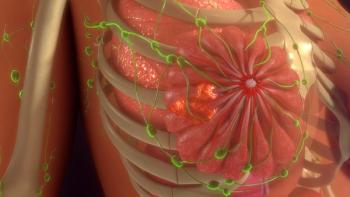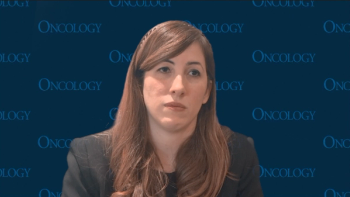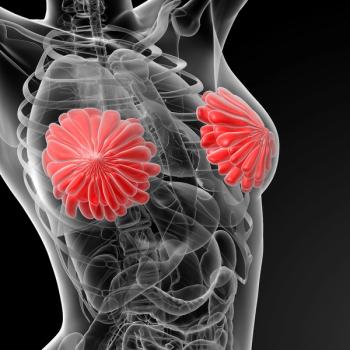
- ONCOLOGY Vol 14 No 4
- Volume 14
- Issue 4
Physicians May Not Be Removing Enough Breast Tissue in Younger Patients
Younger women who undergo lumpectomy to remove noninvasive breast cancer cells are significantly more likely to experience a recurrence than older patients, in part, because physicians may not be removing enough breast tissue during
Younger women who undergo lumpectomy to remove noninvasive breast cancer cells are significantly more likely to experience a recurrence than older patients, in part, because physicians may not be removing enough breast tissue during surgery, according to a study conducted by researchers at William Beaumont Hospital in Michigan.
Over a 13-year period, lead author Frank Vicini, md, and his research team followed 146 patients who were treated at the Michigan hospital with breast-conserving therapy (lumpectomy plus radiation) for ductal carcinoma in situ (DCIS). They found that younger patients (ie, those under 45 years old) had a significantly greater rate of cancer recurrence (26.1%) than older women (8.6%). This higher rate of recurrence among younger women was due to surgery that may not have cleared the margins.
Extent of Surgery, Not Age, Increases Recurrence
When the researchers looked more closely at the 95 patients who had a second lumpectomy due to concerns that some cancerous tissue remained, they found that the 31 younger patients in this group more frequently had less tissue initially removed than the older patients. Thus, the factor most associated with a poor outcome was not age but the extent of the surgery. Bigger surgeries offered better results, said Vicini. He speculated that concern for appearance may have been a primary reason for the removal of too little tissue.
However, Vicini stressed that DCIS can present differently in younger patients. In younger women, cancer can be spread over a slightly larger area in the breast because the tissue is more dense and has more ducts. As women age, ducts are replaced by fat, he says. The surgery needs to meticulously clear the margins in both younger and older women.
Articles in this issue
over 25 years ago
Dr. Susan Love Launches Women’s Health Web Siteover 25 years ago
Thalidomide Active in Advanced Multiple Myelomaover 25 years ago
Bexxar Plus Fludarabine Effective First-Line Therapy for NHLover 25 years ago
Results of Lymphoma Vaccine Study Prompt Large- Scale TrialNewsletter
Stay up to date on recent advances in the multidisciplinary approach to cancer.



















































































